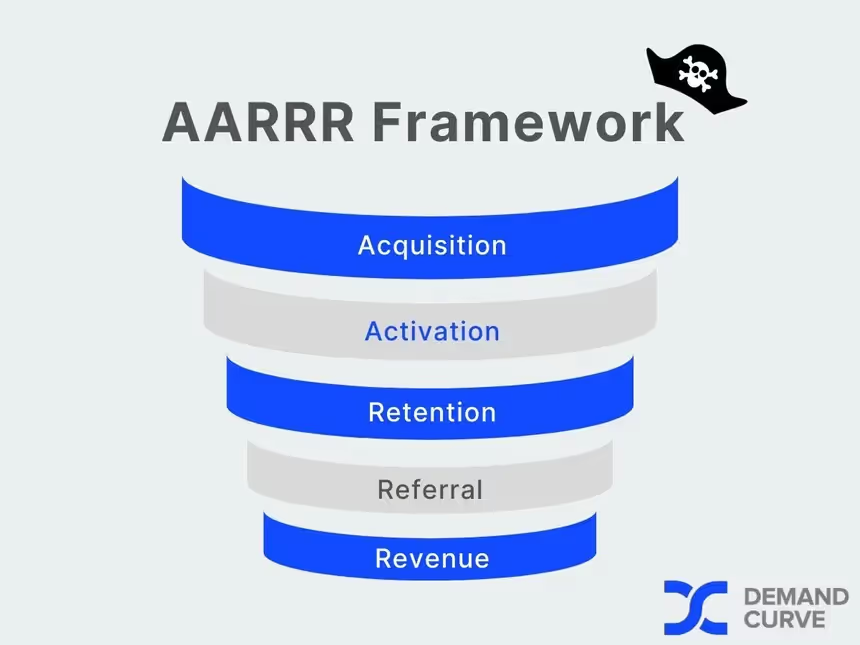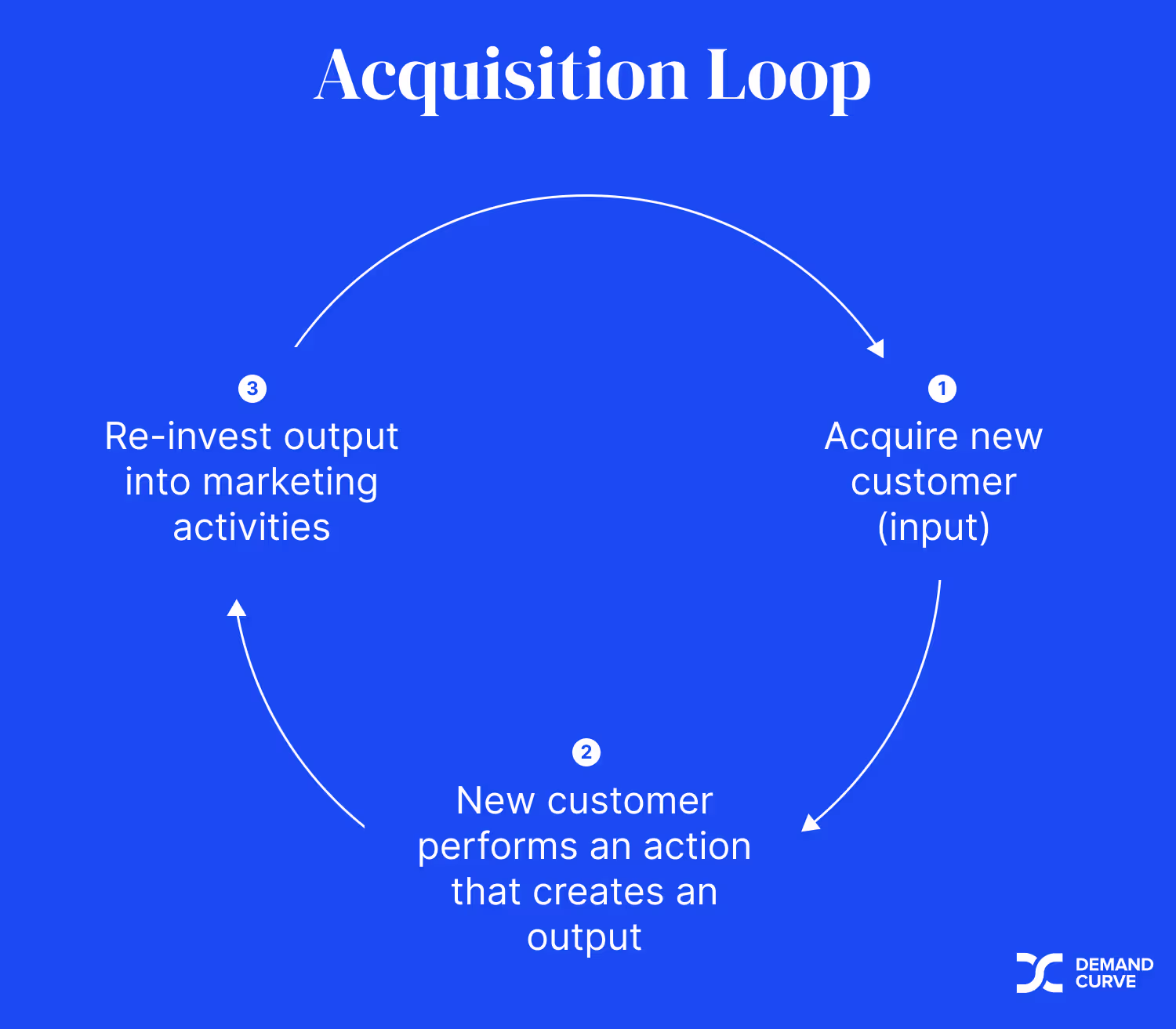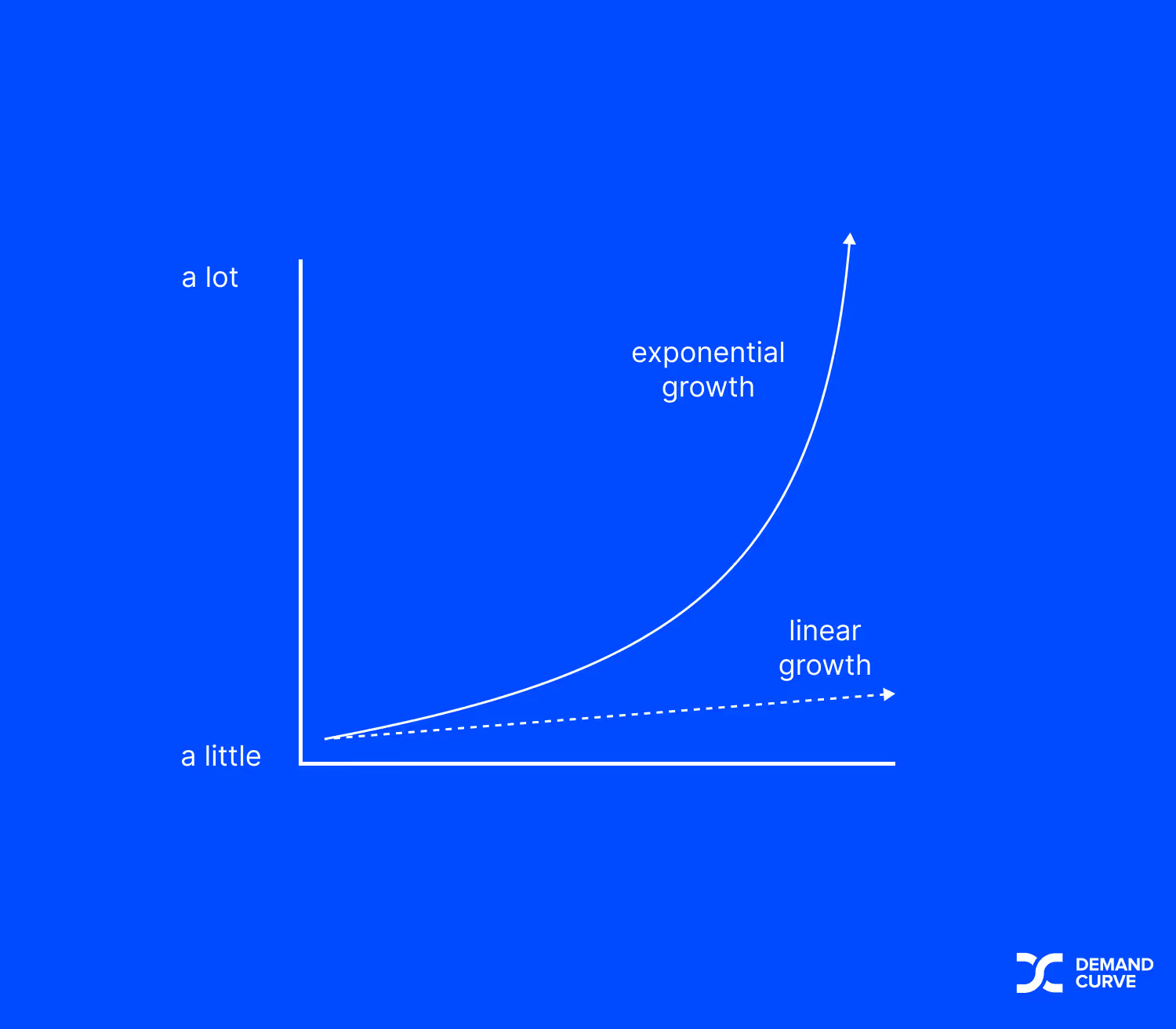The Growth Funnel and Acquisition Loops
The Five Fits Framework helps us to visualize WHY certain startups grow, but it doesn't explain HOW they do it. For that, we'll introduce two new frameworks:
- The Growth Funnel
- Acquisition Loops
The Growth Funnel

A typical growth funnel consists of five stages:
- Acquisition: how you find new people who are interested in your product
- Activation: how you turn interested people into customers
- Retention: how you get people to purchase your product again or continue using it
- Referral: how you get customers to tell their friends about your product
- Revenue: the money you generate from all these activities (which will ideally be much higher than the costs associated with doing the work)
A simple acronym to remember this is AARRR.
AARRR funnels help you visualize how customers progress through the buying and product experience. This is useful for identifying where people are getting stuck and where we can optimize.
However, the funnel framework also has some limitations. Like the Five Fits Framework, the AARRR funnel doesn't fully illustrate how customers and resources flow throughout your business to drive growth. The funnel makes it seem as though growth is linear. As if there was a finite endpoint. That isn't the case—especially not for startups that have developed a scalable growth engine.
We'll turn to another framework to fill this gap: acquisition loops.
Acquisition loops
An acquisition loop explains how a scalable and repeatable growth strategy—the kind of strategy we'll be helping you build throughout this program—acts as a self-perpetuating flywheel (or "loop") to produce exponential growth.
A simple acquisition loop looks like this:

Unlike the funnel, your customers don't move linearly. Instead, they produce an output that you can reinvest right back into a growth system, which leads to even more customers.
Examples with loops
Product virality is a well-known example of a "loop."
- Someone signs up for a product like Twitter
- They have a great experience, and invite a few of their friends
- Those friends sign up and invite friends of their own.
If enough people share Twitter with their friends, and enough of those friends sign up and share, then the product can grow exponentially.
Ads is a classic loop channel:
- You pay for ads on Instagram
- You generate more revenue from the new customers than it cost to acquire them
- You re-invest the profit into running more ads
Sales is another channel that has a looping mechanism:
- You hire a salesperson
- They go out and close deals that produce revenue
- That revenue is used to hire another salesperson, who then closes more deals and produces more revenue.
- The loop repeats.
The key to all 3 is that you have obvious ways to scale the system to get more of the "output" (revenue/customers) by increasing the "input" (sales).
This isn't to say that you're guaranteed to experience exponential growth just because you hire a sales team or have users who are sharing your product.
Far from it.
Examples without loops
PR is a classic one:
- You get featured in Techcrunch
- You get an influx of visitors and customers
- You try to get more features in Techcrunch, but they're only willing to do it during big milestones
ProductHunt:
- You launch on ProductHunt and rank #2 for the day
- You get a big influx of visitors and customers
Throwing Conferences:
- You throw a conference
- You get an influx of leads and cash
- You use the proceeds for another conference..... next year.
Essentially, one-off projects or ones that don't scale easily.
There are all kinds of different loops
For now, we just want you to be familiar with the concept of loops so you understand how some companies have been able to design systems that produce seemingly effortless growth.
Growth that looks like the solid line instead of the dotted one:

In upcoming sections, we'll dig into the different types of loops and help you identify the best one(s) for your company.


